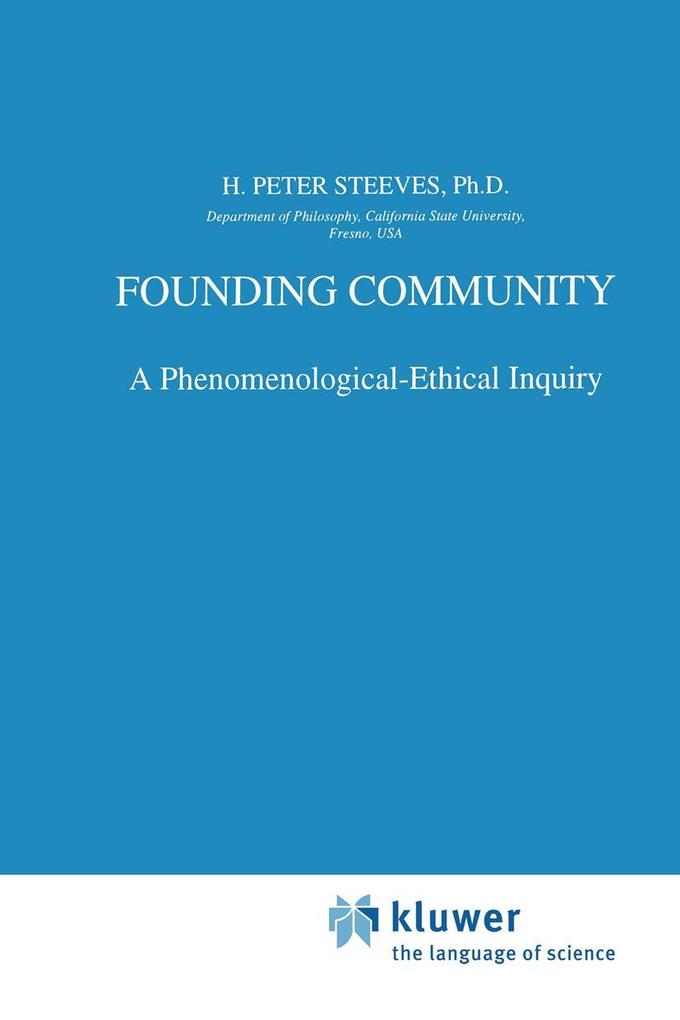Phenomenology, in its traditional encounters with ethics, has commonly aimed at a more descriptive rather than prescriptive goal. The direction of this project, however, is both phenomenological and prescriptive as I attempt to provide a phenomenological foundation for communitarian ethical theory. I argue, following Husserl, that the Ego and the Other arise together in sense and thus we are committed to community in a foundational way. I am always and fundamentally constituted as a member of a community - as a Self among Others - and, given this, there are certain ethical implications. Namely, there is a communal Good of which my good is but a perspective; indeed, it is a perspective on a Good which encompasses the whole of the living world and not just humanity. Consequently, we are foundationally imbedded in a deep community and a deep communitarian ethic.
Inhaltsverzeichnis
I: Morality and Phenomenology. - 1. Introduction. - 2. Science, Morality, and Phenomenology. - Notes. - II: The Ego and the Other in a Pairing Relation. - 1. Introduction. - 2. Empathic Perception and the Constitution of the Ego and the Other in Cartesian Meditations. - 3. The Sphere of Ownness. - 4. The Reciprocal Relation of Pairing: Some Problems. - 5. Theunissen and the Question Concerning Pairing. - Notes. - III: Instinct and the Presence of the Other. - 1. The Case for Instinct. - 2. The Other as Unity. - 3. Re-Thinking Infantile Intentionality. - 4. Limitations from a Husserlian Standpoint. - Notes. - IV: Moral Categoriality & Moral Being. - 1. Introduction. - 2. The History of Moral Theory. - 3. Categoriality and Foundations. - 4. Moral Categoriality. - 5. Morality as Choice v. Mode of Being. - 6. Problem: The Unthinking Actor. - 7. Problem: The Non-Judgmental Actor. - 8. Conclusion. - Notes. - V: Phenomenological Communitarianism. - 1. Introduction: The Descriptive and the Normative. - 2. Communitarian Theory in General: Three Problems. - 3. The Disappearing-Self Problem. - 4. The Intersubjective Good Problem. - 5. The Constitution of a Community Problem. - 6. The State of our Union, the Union of our State. - Notes. - VI: Non-Human Life and the Boundaries of Community. - 1. Introduction: A Persian Fable. - 2. Initial Human Pairing with Animals. - 3. Animal Phenomenology and the Possibility of Community Generated Without Humans. - 4. The Gracious Act of Attention Late-in-Coming. - 5. Community Through Narrative. - 6. Humans and Animals in a Second-Order Community. - 7. Conclusion: The Common Good as Moral Foundation. - Notes.




































